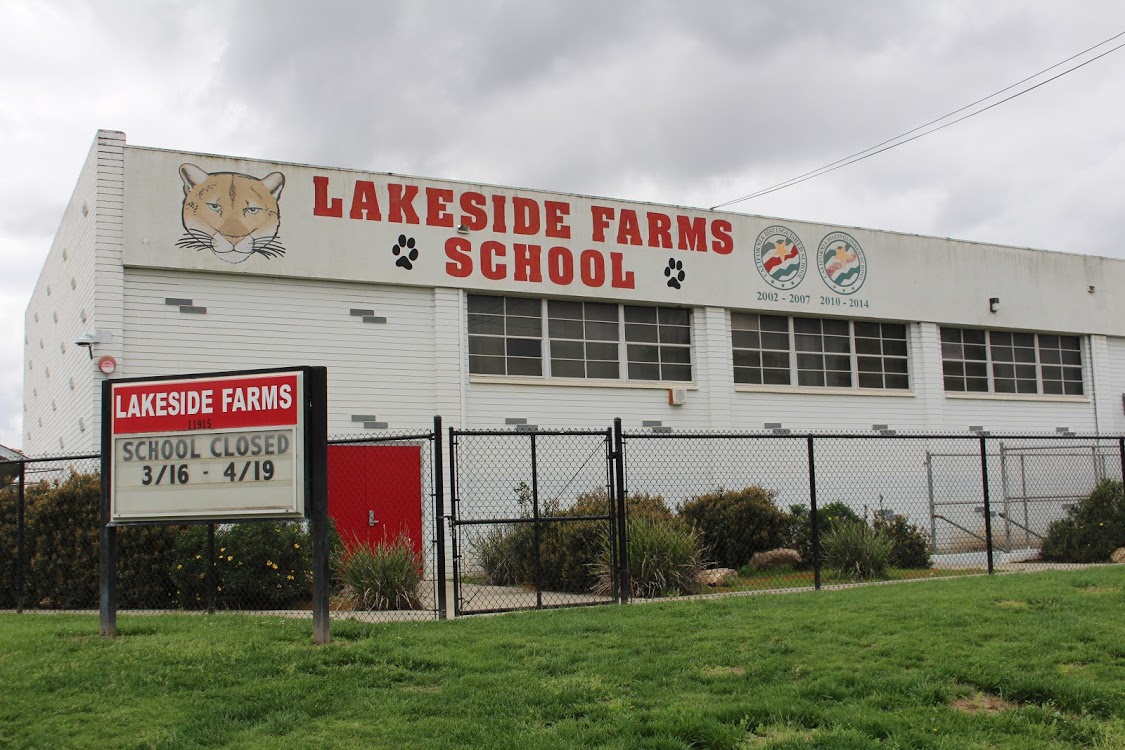The county’s Planning Commission made recommendations on zoning standards for small cell wireless facilities.
The recommendations were approved on a 5-1 Planning Commission vote July 19. David Pallinger was absent and Michael Beck voted in opposition due to the final recommendation of 100 feet of separation from buildings rather than 1,000 feet from specific sites as had been recommended by the county’s Department of Planning and Development Services (PDS).
Any changes to the county’s Zoning Ordinance must be approved by the San Diego County Board of Supervisors, and PDS has targeted the Aug. 7 Board of Supervisors meeting for the new zoning requirements to be reviewed by the county supervisors.
“We’re looking at community character and aesthetics concerns,” said Eric Lardy, the chief for the Advance Planning Division of PDS.
A Federal Communications Commission regulation on small wireless facilities took effect Jan. 15 and requires all jurisdictions to adopt compliant regulations and limits to what jurisdictions can charge companies for small facilities.
PDS developed a definition of small wireless facilities to define them as facilities where each antenna is no more than three cubic feet in volume. PDS also proposed a limit of 28 cubic feet for the wireless equipment and any pre-existing associated equipment on the structure and proposed a requirement for facilities to be mounted on new or existing structures in the public right-of-way with allowance for such facilities on private property if attached to an existing public utility pole or permitted telecommunication facility.
The fee portion of the proposed revisions will require all small cell wireless facility permit applicants to pay an issuance fee and place a deposit with PDS to cover inspection costs associated with the permit issuance, and the applicant will also pay an annual use, maintenance, and access fee for each facility.
The proposed regulations on the small cell facilities were part of a Jan. 25 Planning Commission hearing on proposed amendments to the Zoning Ordinance, and a 6-0 vote with Beck absent forwarded many of the recommendations to the San Diego County Board of Supervisors.
The county supervisors heard the proposed changes Feb. 27, and for the small cell wireless facilities the Board of Supervisors approved the definition and a process for fees. The supervisors also directed PDS to evaluate additional changes to the Zoning Ordinance and return to the board within 180 days.
The issues PDS were directed to evaluate include cluttering, avoidance of certain areas, co-location with existing infrastructure, separation between poles, placement of equipment on poles, preferred locations for residential areas, undergrounding of equipment, and additional public noticing.
The FCC regulation allows jurisdictions to develop regulations related to aesthetics, but the small cell facilities cannot be prohibited.
Other jurisdictions filed a lawsuit against the FCC regulation, and the county has submitted a letter in support of that lawsuit.
The Federal Telecommunications Act of 1996 prohibits jurisdictions from regulating placement based on the environmental effects of radio frequency emissions (local governments can establish public safety standards for other matters not under Federal jurisdiction) and also prohibits discrimination among providers.
The new regulation requires the local jurisdiction to address applications within 60 days for facilities co-located on existing structures and within 90 days for new structures.
A macro cell facility may have a range of up to 20 miles while the range of a small cell facility is usually between 160 and 1,600 feet. A small cell facility consists of a wireless antenna and support equipment including radio equipment, an electrical meter, fiberoptic cable and power lines.
The small cell facilities are for fifth-generation, also known as 5G, wireless communication, although they can also be used for fourth-generation (4G) communications.
“Higher frequencies are better for data transmission, but they are not as strong,” said Crown Castle government affairs manager Adrian Salas. “5G needs to be closer to the receiver.”
The generations are standards developed by academics and industry.
“It’s not a standard unit of measurement,” said Verizon Wireless municipal engagement partner Michael Farraher.
Farraher noted that increased speed is one component of 5G as is increased capacity.
“We seek to provide relief,” said AT&T director of external affairs John Osborne. “It will supplement and complement 4G.”
PDS held stakeholder meetings and also addressed the topic at the quarterly meetings of community planning group and community sponsor group chairs. Presentations were made during the meetings of six community planning groups.
The measures to reduce clutter include configuration preferences to reduce the number of new poles. The highest preference is location on an existing facility followed by existing or replacement utility poles, existing or replacement structures or roof-mounted facilities in industrial or commercial zones, county-owned street light poles, county-owned traffic signals, and new utility poles.
“Once you have a co-location, two instead of one, you reduce the impacts,” said Planning Commissioner Michael Beck.
Sharing locations with other providers may be an option, said Lardy.
“There are areas where they could co-locate,” Lardy said. “There are areas where there will be multiple poles for multiple providers.”
Although co-location is encouraged additional facilities will require an increase in the pole’s height and would also add to the visual impact, so a pole would be limited to two facilities.
“The more co-location you have the taller and larger facility it would be,” Lardy said.
The separation requirement for new poles would be 500 feet in preferred areas and 1,000 feet in non-preferred areas and would not apply to facilities placed on existing buildings or poles.
Public safety conditions the county can regulate include physical obstructions, so contingent upon Board of Supervisors approval equipment on poles must be at least seven feet above the ground in all areas and at least ten feet in areas which allow equestrian activities. Any support cabinets must be clear of the path of travel and set back from public right-of-way. Although the antennas, radios, and electrical meters must be above ground to function all other equipment must be placed underground unless determined not to be technically feasible.
The most preferred locations include industrial zones, commercial zones other than those with C34 (General Commercial – Residential) and C35 (General Commercial – Limited Residential) zoning, and special purpose zones. The least preferred zones include rural, C34 and C35, and residential zones.
PDS had proposed a 1,000-foot buffer from schools, child care centers, hospitals, and religious facilities while reviewing and rejecting public requests to have setbacks from fire stations, Sheriff’s stations, shopping areas, parking lots, and county parks. Members of the public also requested setbacks from residential areas, although that was not in the PDS recommendation to the Planning Commission.
Although the process for a small cell wireless facility may be ministerial rather than discretionary, construction will impact nearby properties so PDS and the Planning Commission recommended noticing of all properties within 500 feet as well as to community planning and sponsor groups.
Noticing for most projects is provided to properties within 300 feet, and the additional distance is intended to ensure public awareness of upcoming construction.
The recommendations also include a requirement for annual reports to be submitted by July 1 with the provider’s list and location of all active, non-operating, and permitted but not yet installed small cell sites and provision of a current certificate of insurance for all active small cell facilities. If excavation in public right-of-way is required general liability insurance of at least $500,000 must be provided and the county must be protected from liability.
Rancho Santa Fe resident Holly Manion is a real estate broker. She noted that aesthetics related to wireless facilities impact property values.
“We still have some zoning rights that have not been stripped away. Setbacks is one of them,” she said.
Susan Foster, who also lives in Rancho Santa Fe, suggested a setback of the pole’s height plus ten percent.
“If that falls anywhere within a 360 degree radius whoever’s in the way is going to be a victim of that,” she said. “The fall zone is an area that is an essential safety factor.”
Farraher told the Planning Commission that the weight of all the equipment weighs approximately 90 pounds. Salas noted that any pole not structurally able to handle equipment will be replaced.
Local governments cannot regulate based on health concerns from radio frequency emissions, but radio frequency interference issues may be used to protect other local communications.
“The environmental effects of radio frequency emissions have nothing to do with radio interference,” said Fallbrook resident Bob Gonsett.
Gonsett is the president of Communications General Corporation, which measures broadcast frequencies and interference. “My lab qualifies as a sensitive site. We need to keep it that way in order to do our work. If one is just very close to us it will decapitate our equipment or severely compromise it.”
Gonsett added that his laboratory is close to a North County Fire Protection District station and that the county’s Regional Communications System needs protection from radio frequency interference.
Lardy cited community character and aesthetics for the 1,000-foot separation from schools, churches and hospitals.
“These are sites where large numbers of people congregate,” Salas said. “These sites are in more need of this coverage.”
Osborne called for a setback of no more than 300 feet.
“It could affect our ability to cover that neighborhood,” he said.
The 100-foot separation applies to residential areas as well as schools, hospitals and churches. That separation for all areas applies only to facilities within the public right-of-way and not to facilities mounted on structures.














